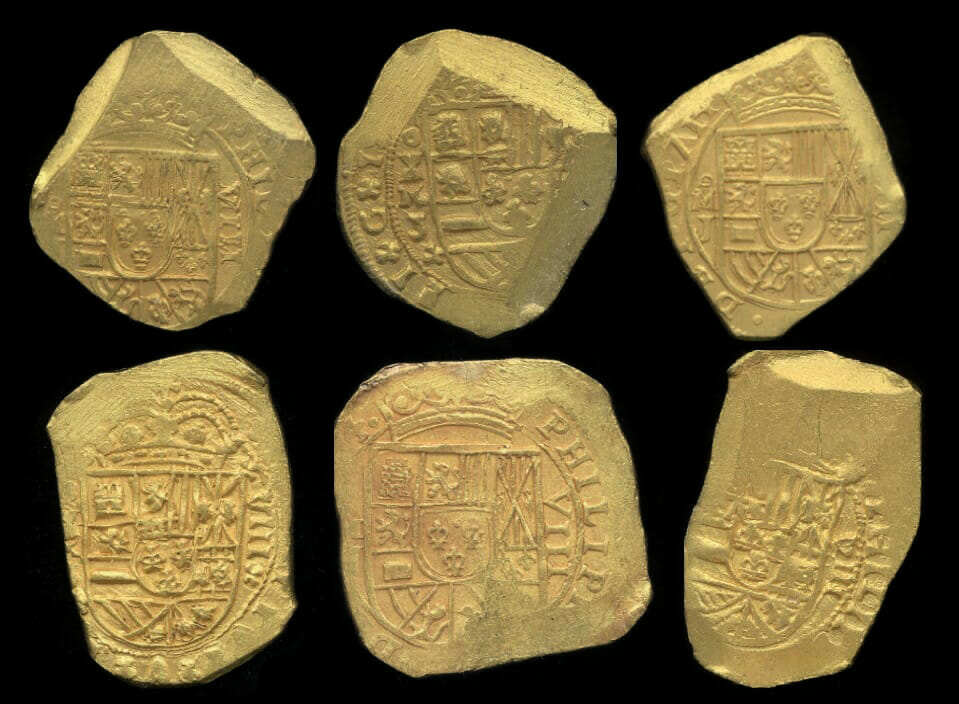The Treasure of the Month for April is this small group of gold Mexico eight escudos from the State of Florida Collection. What makes this group so special is the very odd shape portrayed in each coin. While odd and unusual shapes are not uncommon in coins from the Mexico City mint, these examples are out of the ordinary, even for this mint. A study of the State of Florida Collection of gold cob coinage reveals that Mexican mint masters did not adhere to strict quality control standards. When compared to coins of the Lima mint from the same era (which were almost universally round) it is obvious that Mexico mint coins appear to be aesthetically inferior. However crude they may look now at least one theory suggests that they did not start out that way.
In his pioneering work, Spanish Colonial Gold Coins in the Florida Collection, Alan Craig conducted a complete analysis of gold cob coinage in the State of Florida Collection. His knowledge of the collection was based on his personal examination of each and every coin. In his book, he advances a theory regarding how these iconic gold coins were produced at the Mexico City mint. He describes the production process as starting with bullion of the correct fineness, which was cast into a narrow mold creating long thin sheets, which were cut into rectangular strips. The sheared strips were passed through a roller mill which produced a uniform thickness. The strips were then cut into rectangular blanks. He then surmised that the planchets were then placed into some type of device that allowed the planchets to be uniformly struck. This would explain why Mexican cob coinage is free of striking errors and doubling usually found in Lima cob coinage (Craig 43-44).
The final step in the process required that the rectilinear planchets with crisply struck features be turned over to another worker who would then proceed to beat the planchets with a heavy hammer in an attempt to create round coins. Specifically:
“He did this by placing the coin on an anvil-like surface having a vertical backstop. The first blows were directed against the corners, creating a sloping facet where the hammer struck and commonly driving the tip of the opposite corner slightly upward against the backstop. As the coin was rotated on this flat surface, a series of hammer blows usually eliminated the remaining corners and created the curious faceted patter we associate only with Mexican cob doubloons” (Craig 44).
Unfortunately, these hammer blows destroyed much of the legend and occasionally other features for no apparent reason. Most faceting was done on the obverse, but there are examples of where the reverse side was also struck. The result of this process was that the coin makers at the Mexico mint ended up with a coin that was cruder in appearance that the handmade cobs of Lima. In the end, Craig concluded that the Mexican system of minting actually consisted of several steps involving both hand and machine operations, with the former predominating (44-45).
Craig’s theory about the minting process may be correct up to a point. Recently discovered information seems to suggest other explanations for the process of faceting and blunting of sharp points. It has been suggested that the practice of faceting was not for the purpose of trying to make these coins round. Rather, it was done for another reason: as a means of adjusting the weight of each coin so that it was within the accepted tolerance. As suggested by Craig, the planchets from which the coins were produced were rectilinear. This would suggest that the planchets were often heavier than the standard weight for an eight escudos (27.064 grams). The faceting process would have been a way to remove some of the gold and get the coin into proper tolerance.
As documents from Spain to Mexico reveal, the process of blunting the sharp points of the coin was to discourage the illegal practice of “clipping”. “Clipping” occurred when a sharp part of a coin was cut off by a culprit thereby reducing the weight of the coin, albeit ever so slightly. The wrongdoer would then be able to use the gold coin in commerce without anyone knowing it was underweight. Also, the offender would walk away with a tiny bit of gold.
What follows are several examples from the Florida Collection, which illustrate the rectilinear shapes of the coin as well as faceting and blunting.
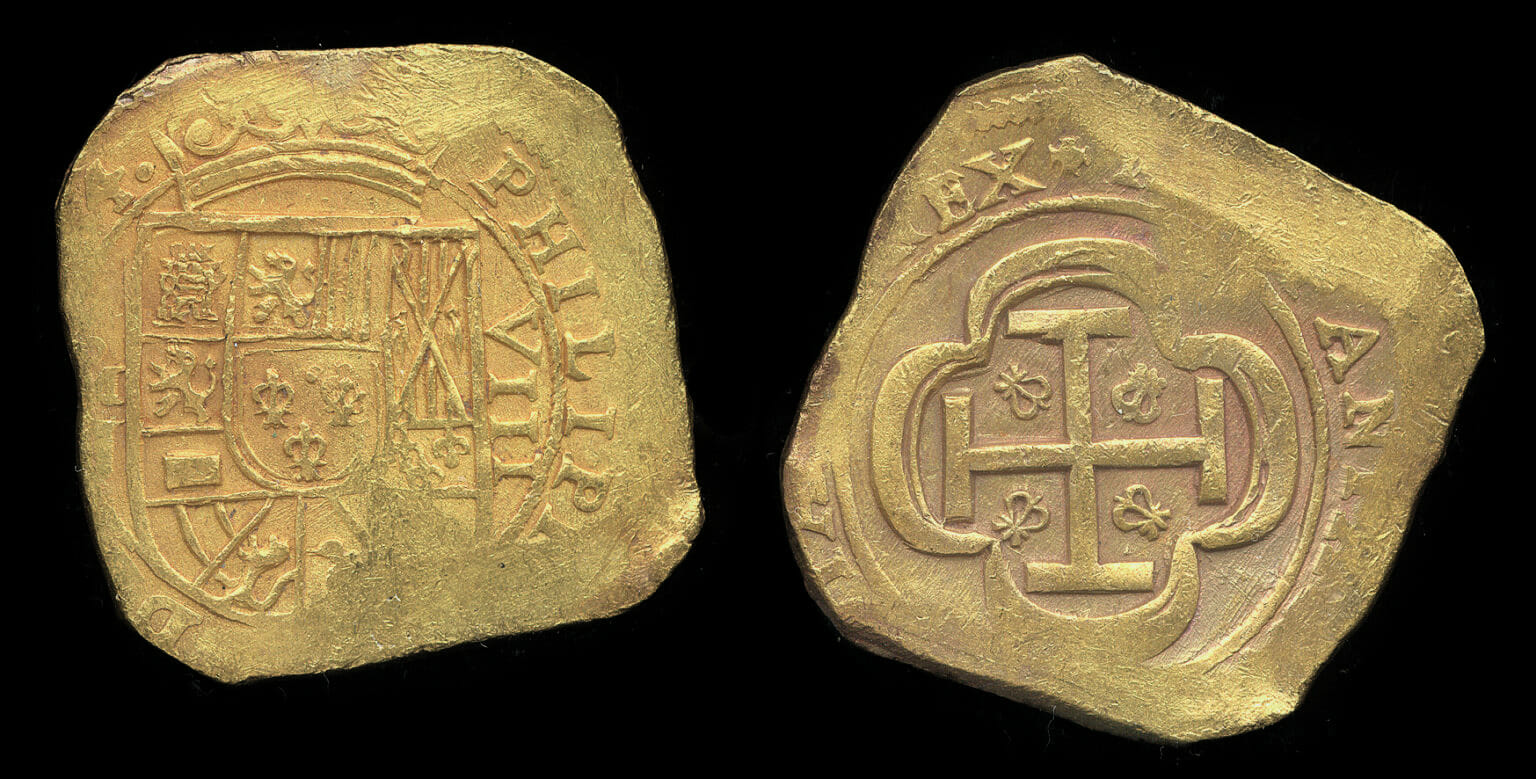
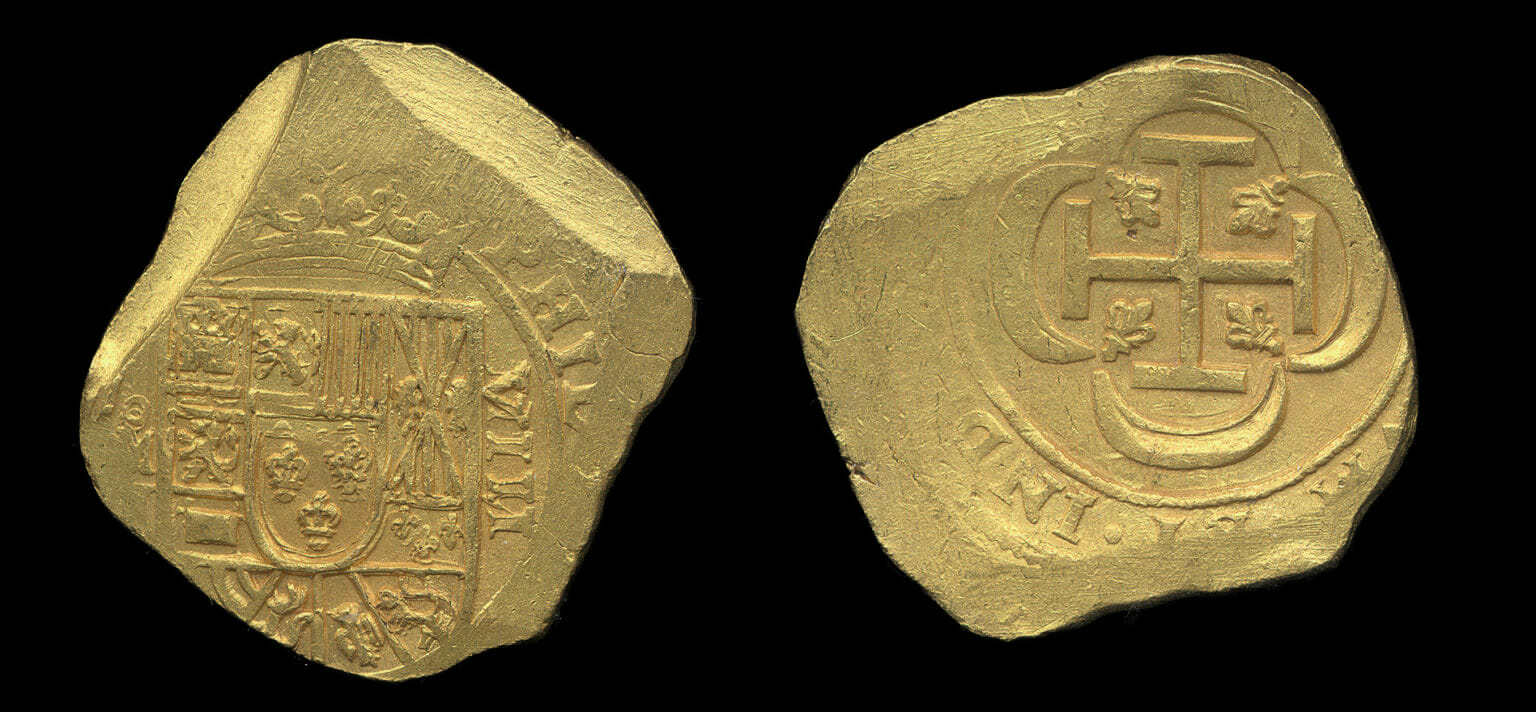
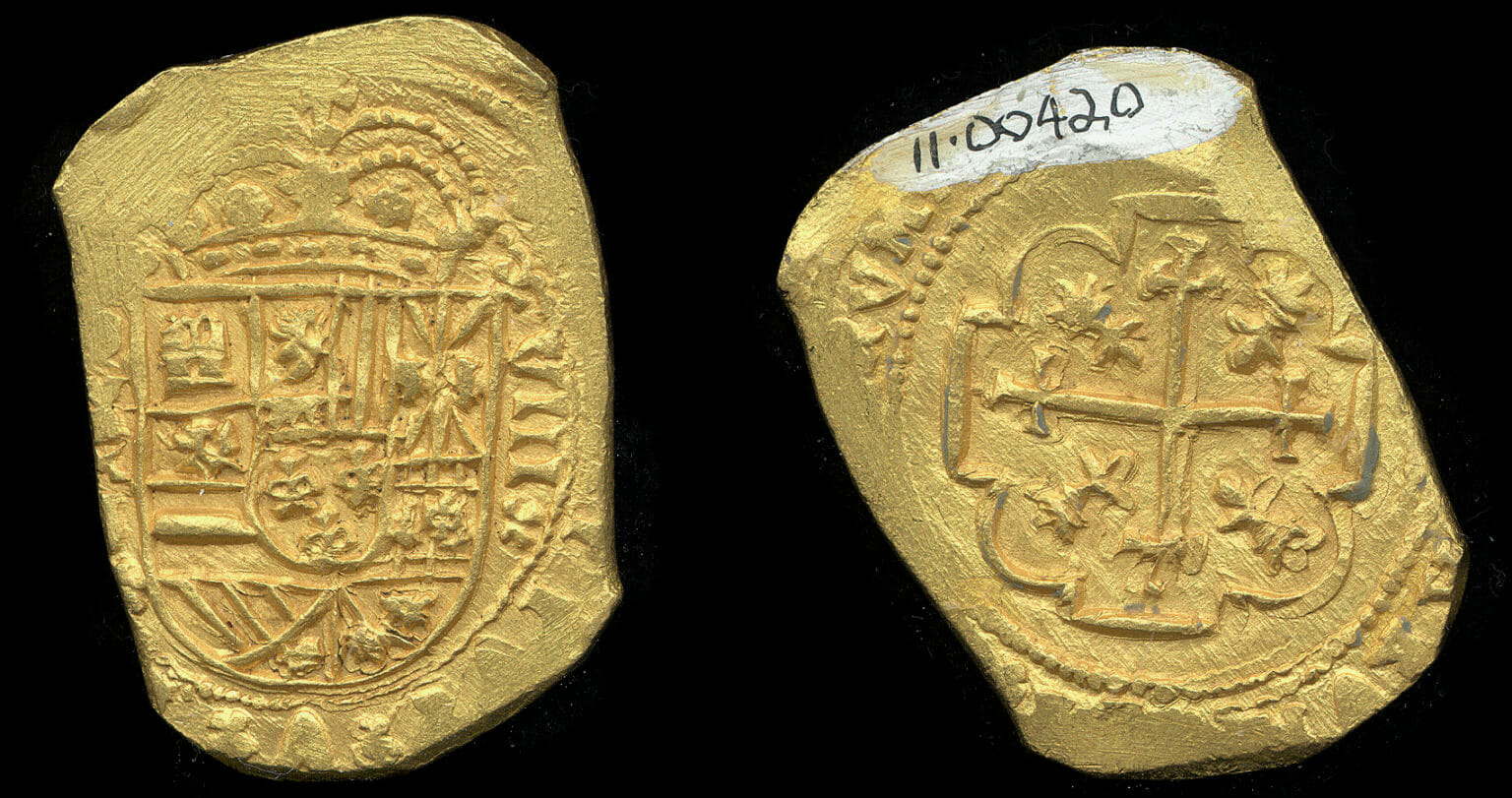
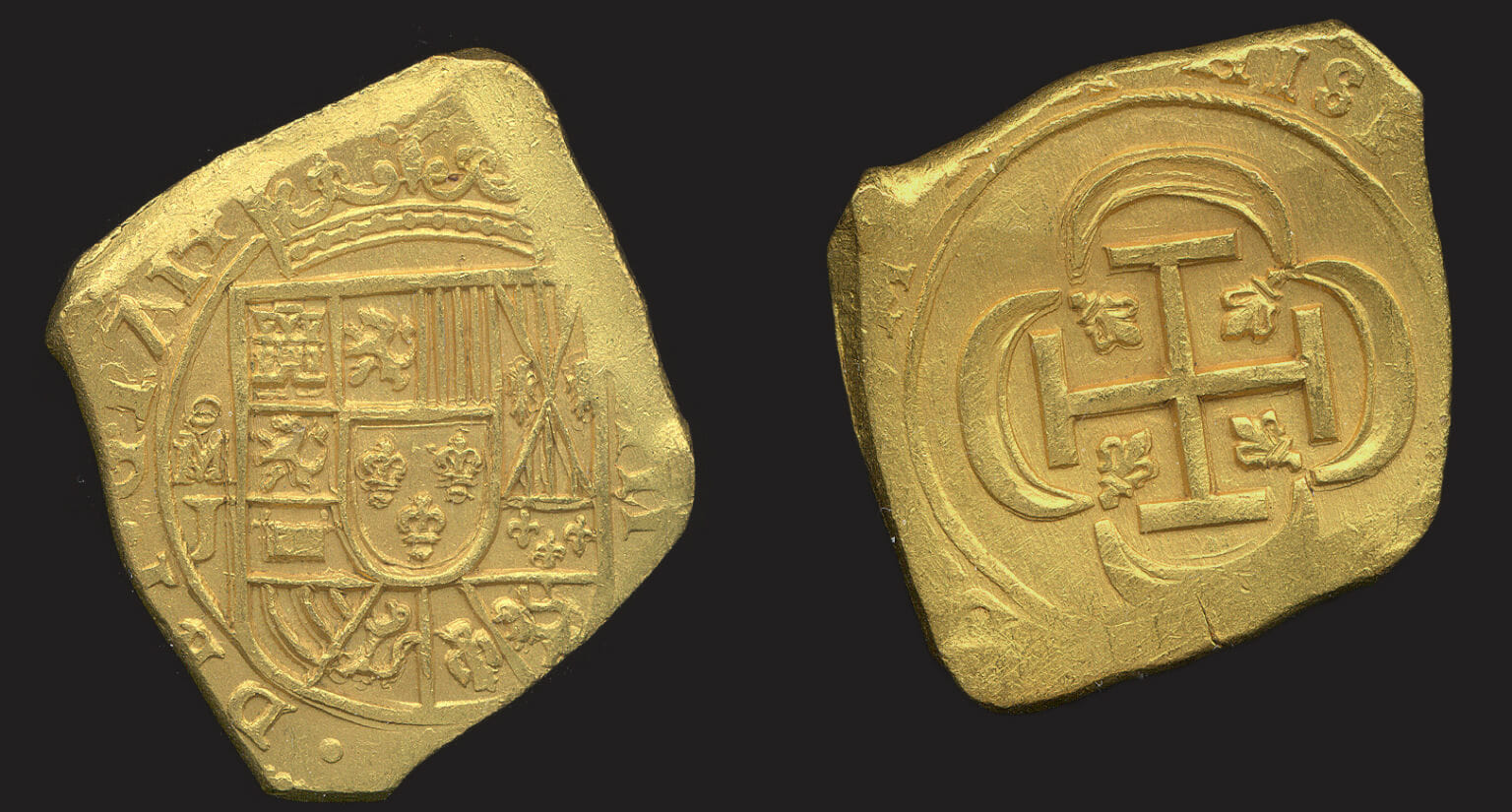
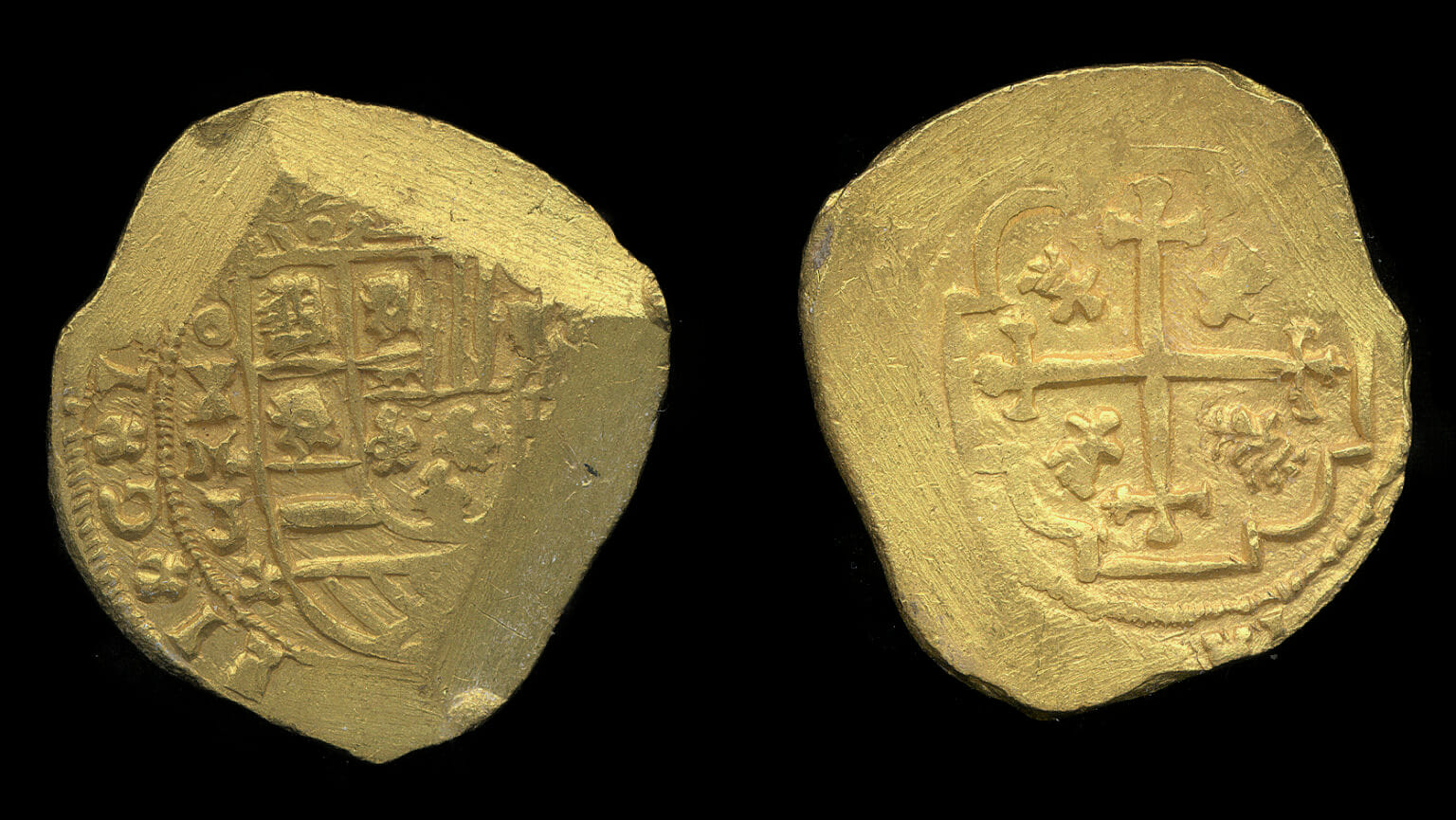
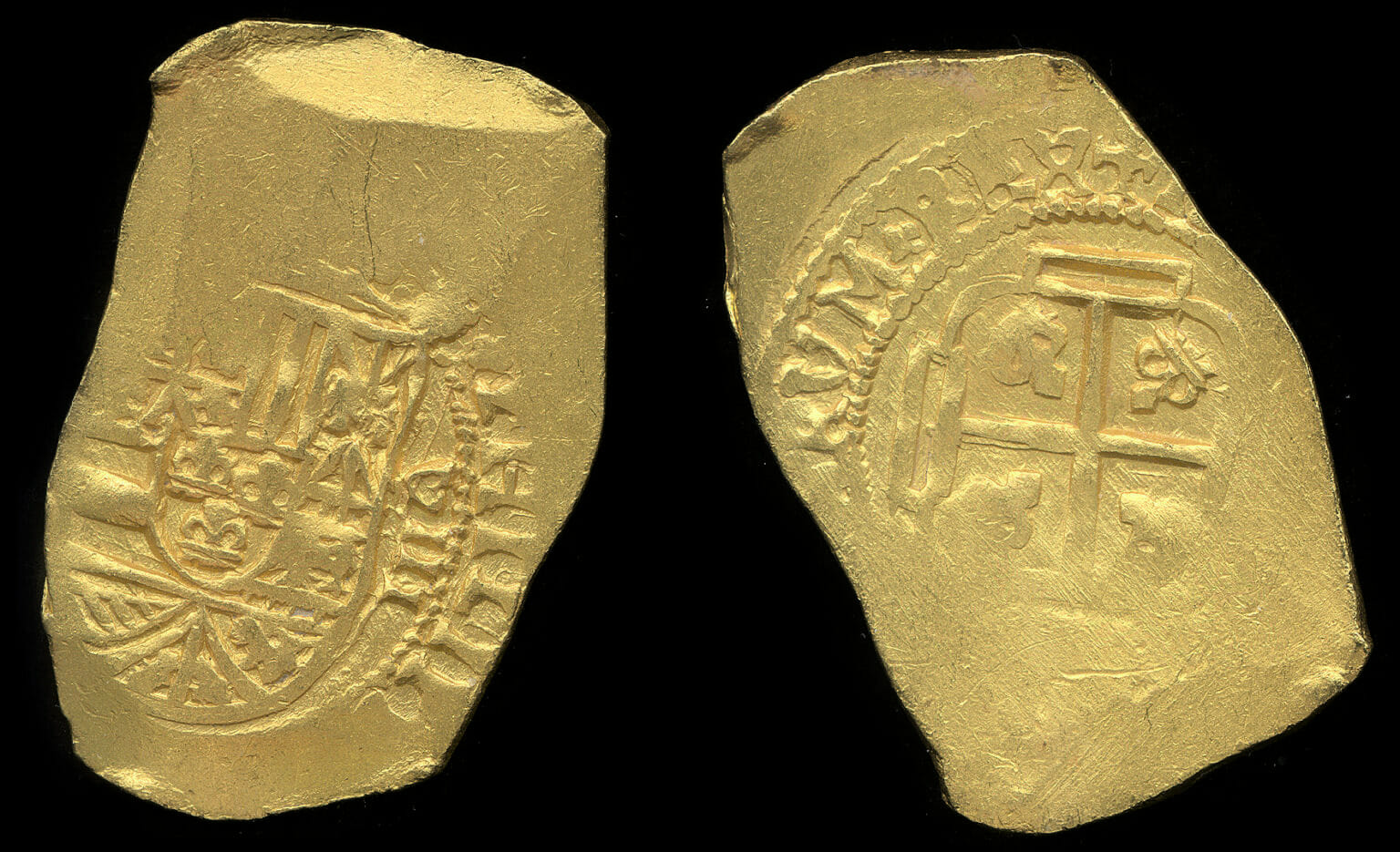
Works Cited
Craig, Alan. Spanish Colonial Gold Coins in the Florida Collection, Gainesville: University Press of Florida, 2000.
